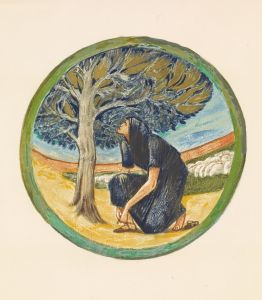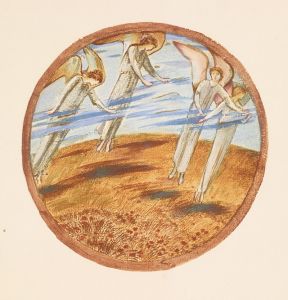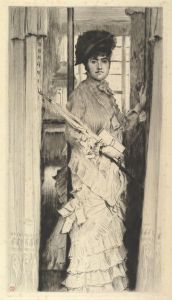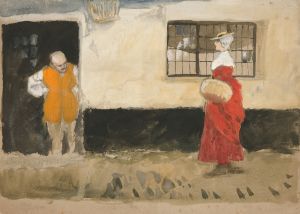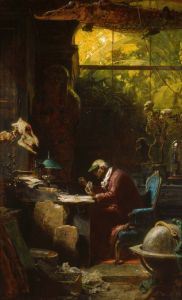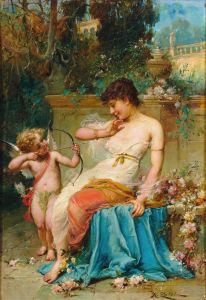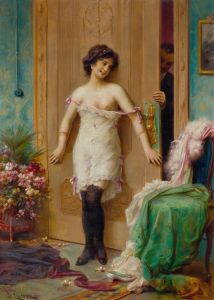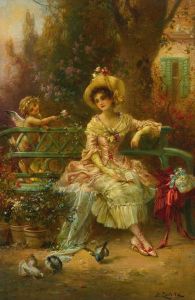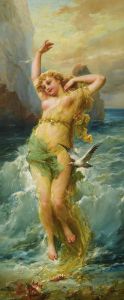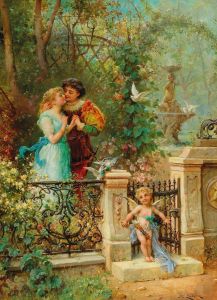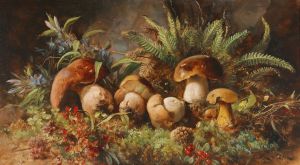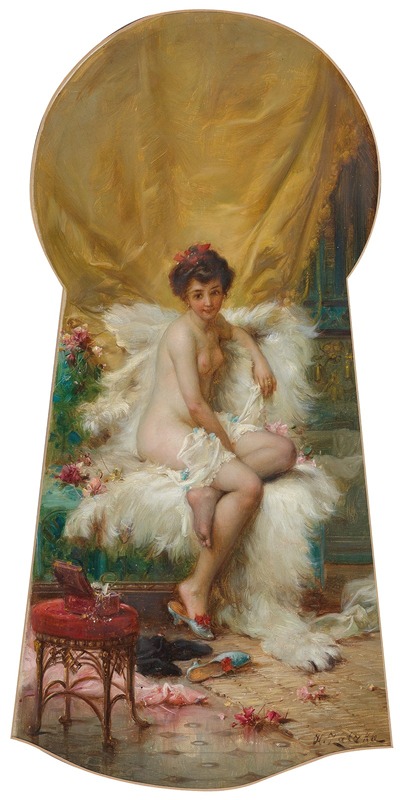
Durchs Schlüsselloch geschaut
A hand-painted replica of Hans Zatzka’s masterpiece Durchs Schlüsselloch geschaut, meticulously crafted by professional artists to capture the true essence of the original. Each piece is created with museum-quality canvas and rare mineral pigments, carefully painted by experienced artists with delicate brushstrokes and rich, layered colors to perfectly recreate the texture of the original artwork. Unlike machine-printed reproductions, this hand-painted version brings the painting to life, infused with the artist’s emotions and skill in every stroke. Whether for personal collection or home decoration, it instantly elevates the artistic atmosphere of any space.
Hans Zatzka was an Austrian painter known for his romantic and often whimsical depictions of mythological and allegorical subjects. Born on March 8, 1859, in Vienna, Zatzka studied at the Academy of Fine Arts in Vienna under the tutelage of Christian Griepenkerl, Carl Wurzinger, and Leopold Carl Müller. His works are characterized by their vibrant colors, intricate details, and often feature enchanting scenes with fairies, nymphs, and other mythical creatures.
"Durchs Schlüsselloch geschaut," which translates to "Looked Through the Keyhole," is one of Zatzka's paintings that exemplifies his style and thematic interests. The painting captures a moment of curiosity and intrigue, a common motif in Zatzka's work, where the viewer is invited to peek into a world of fantasy and imagination. While specific details about this particular painting are scarce, it is consistent with Zatzka's oeuvre, which often includes playful and voyeuristic elements.
Zatzka's paintings were popular during his lifetime and continue to be appreciated for their technical skill and imaginative compositions. He often worked under various pseudonyms, such as Joseph Bernard and Bernard Zatzka, primarily to sell more of his works through different art dealers. This practice was not uncommon at the time and allowed artists to reach a broader audience without saturating the market under a single name.
The artist's works were widely reproduced, especially in the form of postcards and prints, which contributed to his popularity across Europe. Zatzka's ability to capture the whimsical and fantastical elements of his subjects made his paintings particularly appealing to a broad audience. His art often evokes a sense of nostalgia and escapism, transporting viewers to a world of beauty and fantasy.
Zatzka's style is often associated with the Vienna Secession movement, although he was not a formal member. The movement, which included artists like Gustav Klimt, sought to break away from traditional academic art and explore new artistic expressions. While Zatzka's work remained more aligned with traditional romanticism, his emphasis on decorative elements and vibrant color palettes reflects some of the Secessionist influences.
Despite the lack of extensive documentation on individual paintings like "Durchs Schlüsselloch geschaut," Zatzka's body of work remains significant in the study of late 19th and early 20th-century European art. His paintings continue to be exhibited in galleries and are part of private collections, appreciated for their technical mastery and enchanting subject matter.
Hans Zatzka passed away on December 17, 1945, in Vienna, leaving behind a legacy of art that continues to captivate audiences with its charm and imaginative allure. His works serve as a testament to the enduring appeal of romantic and fantastical art, offering a glimpse into a world where reality and imagination intertwine.





